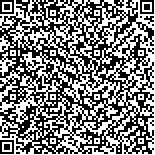肖懿洋,潘晓娜,王玉阳,等.双侧小脑高频重复经颅磁刺激对脑卒中后吞咽障碍患者吞咽功能的影响[J].中华物理医学与康复杂志,2024,46(7):608-612
扫码阅读全文

|
| 双侧小脑高频重复经颅磁刺激对脑卒中后吞咽障碍患者吞咽功能的影响 |
|
| |
| DOI:10.3760/cma.j.issn.0254-1424.2024.07.005 |
| 中文关键词: 吞咽障碍 脑卒中 重复经颅磁刺激,小脑 |
| 英文关键词: Dysphagia Stroke Transcranial magnetic stimulation Magnetic stimulation |
| 基金项目:山东省自然科学基金(ZR2020MH282);国家重点研发计划项目(2020YFC2005700) |
|
| 摘要点击次数: 2840 |
| 全文下载次数: 3528 |
| 中文摘要: |
| 目的 观察双侧小脑高频(10 Hz)重复经颅磁刺激(rTMS)对脑卒中后吞咽障碍患者吞咽功能和时间参数的影响。 方法 选取脑卒中后吞咽障碍患者38例,按随机数字表法分为小脑刺激组和假刺激组,但因各种原因未能坚持治疗2例,故最终36例患者纳入本研究,每组18例。2组患者均给予药物治疗及肢体康复训练;在此基础上,小脑刺激组行小脑rTMS治疗,rTMS刺激参数为10 Hz,120% 静息运动阈值,间隔9 s刺激1 s,共500脉冲;假刺激组行假rTMS治疗(刺激线圈与头皮呈 90°),其余参数同小脑刺激组;然后在磁刺激结束后20 min,2组患者均由同一位言语治疗师指导下行常规吞咽功能训练,30 min/次,1次/d,5 d/周,共训练3周。分别于治疗前和治疗3周后(治疗后),对所有患者行电视X线透视吞咽功能检查(VFSS),采用功能性吞咽障碍量表(FDS)和渗漏-误吸量表(PAS)评估2组患者吞咽障碍的严重程度及其渗漏或误吸风险,记录患者吞咽的口腔转运时间、吞咽反应时间、咽传送时间、喉前庭闭合时间及食管上括约肌开放持续时间,并比较2组患者治疗前后的吞咽功能及吞咽各时间参数的变化。 结果 治疗前,2组患者的PAS和FDS评分以及患者吞咽的口腔转运时间、吞咽反应时间、咽传送时间、喉前庭闭合时间及食管上括约肌开放持续时间等吞咽时间参数各项指标组间差异均无统计学意义(P>0.05)。治疗后,2组患者的PAS和FDS评分均较组内治疗前明显改善(P<0.05)。小脑刺激组治疗后的PAS和FDS评分较假刺激组改善更明显,组间差异有统计学意义(P<0.05);治疗后,2组患者吞咽的口腔转运时间、吞咽反应时间较组内治疗前明显缩短(P<0.05),其余时间参数指标治疗前后变化并不明显(P>0.05);而小脑刺激组患者治疗后吞咽的口腔转运时间和吞咽反应时间较假刺激组缩短更显著,且组间差异有统计学意义(P<0.05)。 结论 双侧小脑高频rTMS可以明显改善脑卒中后吞咽障碍患者的吞咽功能,缩短患者吞咽的口腔转运时间和吞咽反应时间。 |
| 英文摘要: |
| Objective To observe any effect of bilateral high-frequency repetitive transcranial magnetic stimulation (rTMS) of the cerebellum on the swallowing of stroke survivors with dysphagia. Methods Thirty-eight patients with post-stroke dysphagia were randomly divided into a cerebellar stimulation group of 20 and a sham group of 18. In addition to drug therapy and physical rehabilitation training, the cerebellar stimulation group received 500 pulses of rTMS of the cerebellum daily at 10Hz and 120% of the resting movement threshold lasting 1s at 9s intervals. The sham stimulation group was treated with sham rTMS (with the angle between the stimulation coil and the scalp at 90°). Twenty minutes later, both groups were given 30 minutes of routine swallowing training daily by the same speech therapist. The treatment was administered 5 times a week for 3 weeks. Before the treatment and afterward, both groups′ swallowing was evaluated y videofluoroscopic swallowing study (VFSS), using a functional dysphagia scale (FDS) and using the Rosenbek penetration aspiration scale (PAS). Oral transport time, swallowing response time, pharyngeal transport time, laryngeal vestibular closure time and upper esophageal sphincter opening duration were recorded, and the changes in swallowing function and swallowing time parameters before and after the treatment were compared between the two groups. Results Before the stimulation there were no significant differences between the two groups. Afterward, the average PAS and FDS scores of both groups had improved significantly, but with significantly greater improvement in the cerebellar stimulation group than in the sham group. Average oral transit time and swallow response time had shortened significantly, but with significantly shorter time, on average, in the cerebellar stimulation group. Conclusion Bilateral high-frequency rTMS of the cerebellum can improve the swallowing of persons with dysphagia, and shorten their oral transit time and swallow response time. |
|
查看全文
查看/发表评论 下载PDF阅读器 |
| 关闭 |
|
|
|